Area Chart in Python
Analytics Vidhya
FEBRUARY 15, 2024
Among the myriad visualization techniques available, area charts stand out for effectively representing quantitative data over time or categories.
This site uses cookies to improve your experience. By viewing our content, you are accepting the use of cookies. To help us insure we adhere to various privacy regulations, please select your country/region of residence. If you do not select a country we will assume you are from the United States. View our privacy policy and terms of use.

 category python
category python 
Analytics Vidhya
FEBRUARY 15, 2024
Among the myriad visualization techniques available, area charts stand out for effectively representing quantitative data over time or categories.
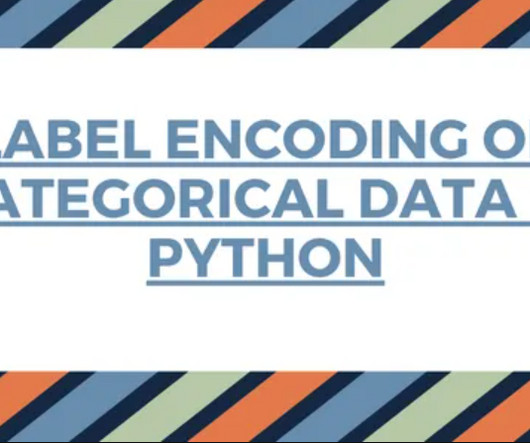
Analytics Vidhya
JULY 12, 2023
By transforming category data into numerical labels, label encoding enables us to use them in various algorithms. […] The post How to Perform Label Encoding in Python? However, many machine learning algorithms require numerical input. This is where label encoding comes into play. appeared first on Analytics Vidhya.
This site is protected by reCAPTCHA and the Google Privacy Policy and Terms of Service apply.
The Path to Product Excellence: Avoiding Common Pitfalls and Enhancing Communication
Peak Performance: Continuous Testing & Evaluation of LLM-Based Applications
Manufacturing Sustainability Surge: Your Guide to Data-Driven Energy Optimization & Decarbonization
From Developer Experience to Product Experience: How a Shared Focus Fuels Product Success
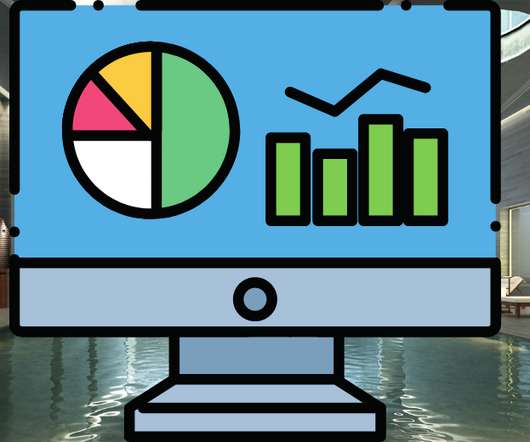
Analytics Vidhya
APRIL 6, 2022
EDA can be divided into two categories: graphical analysis and non-graphical analysis. The post Exploratory Data Analysis (EDA) in Python appeared first on Analytics Vidhya. Introduction Exploratory Data Analysis is a method of evaluating or comprehending data in order to derive insights or key characteristics.
The Path to Product Excellence: Avoiding Common Pitfalls and Enhancing Communication
Peak Performance: Continuous Testing & Evaluation of LLM-Based Applications
Manufacturing Sustainability Surge: Your Guide to Data-Driven Energy Optimization & Decarbonization
From Developer Experience to Product Experience: How a Shared Focus Fuels Product Success
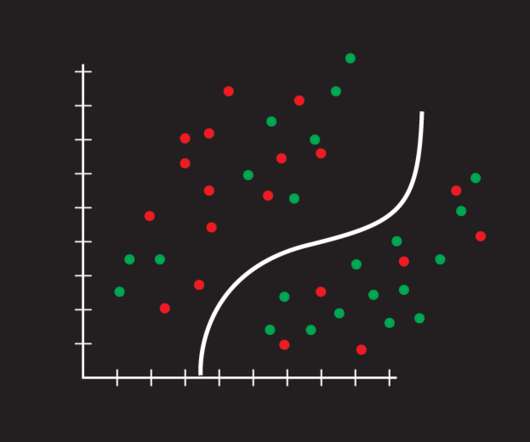
Analytics Vidhya
NOVEMBER 29, 2021
Introduction Consider the following scenario: you are a product manager who wants to categorize customer feedback into two categories: favorable and unfavorable. The post Implementation of Gaussian Naive Bayes in Python Sklearn appeared first on Analytics Vidhya.

Analytics Vidhya
OCTOBER 26, 2021
For visualizing such a type of data, there are several different options to choose from like the pie charts, horizontal bar charts (that indicate percentages of the categories), waffle […]. The post How To Build A Treemap In 3 Ways Using Python appeared first on Analytics Vidhya.
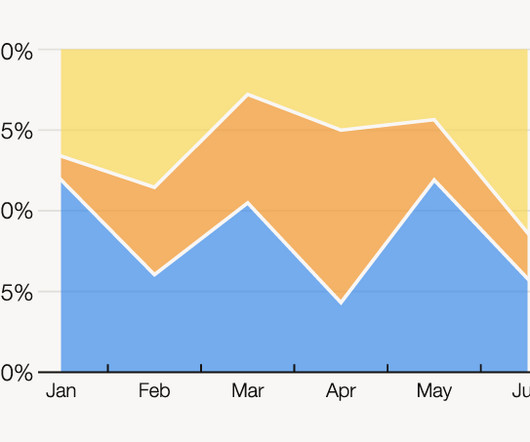
The Data Visualisation Catalogue
FEBRUARY 5, 2024
The X-axis is used for the time scale, which makes this chart ideal for showing the changing overall percentages of categories over time. The data series for each category is colour-coded, which helps to illustrate a part-to-whole relationship. One solution to this issue could be to group minor categories under an ‘other’ category.

O'Reilly on Data
MARCH 19, 2020
Data engineering remains the largest topic in the data category with just over 8% usage share on the platform (Figure 2). That some of these tools ( scikit-learn , PyTorch , and TensorFlow ) are also Python-based doesn’t hurt, either. Python-based tools are ascendant in AI/ML. disproportionately involve Python.
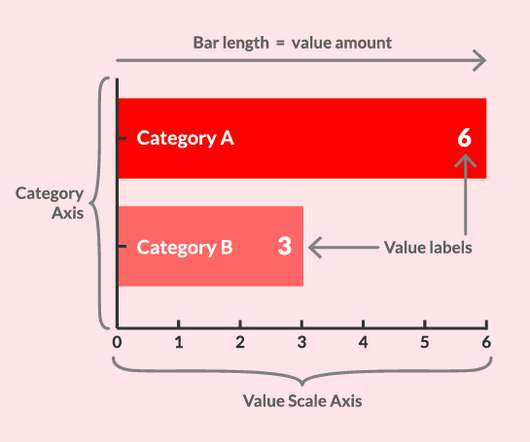
The Data Visualisation Catalogue
DECEMBER 13, 2021
First, locate the value scale axis and the category axis, to identify what is being visualised. Each category is assigned its own bar and the length of each bar is proportional to the value it represents. Colour-coding can be assigned to the bars to distinguish each category in the dataset. ” in each category.
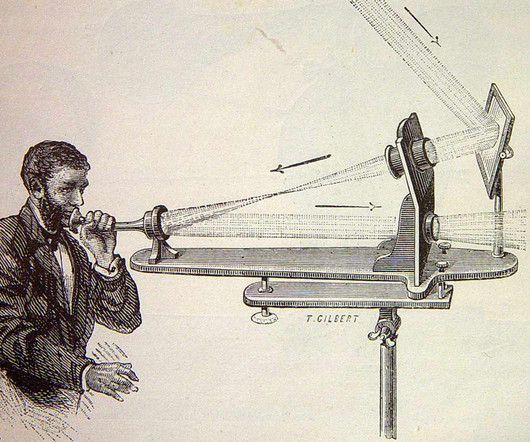
O'Reilly on Data
OCTOBER 17, 2023
Attempts to define prompt engineering fall into two categories: Coming up with clever prompts to get an AI to do what you want while sitting at your laptop. It’s not programming as such, but creating a prompt that produces professional-quality output is much more like programming than “a tarsier fighting with a python.”
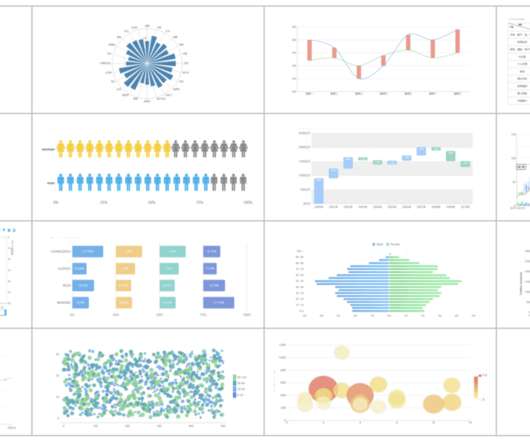
FineReport
SEPTEMBER 2, 2020
Free data visualization tools are professional in different categories: dashboard, chart, maps, network, and so on. FineReport provides more than 19 categories and 50+ styles of HTML5 charts. Category : Reports and Dashboards. Category : charts and graphs. Category : charts and graphs. From FineReport. From Google.

Data Science 101
OCTOBER 24, 2023
Many of those are fairly normal Python and even web-related tasks (our documentation system automatically builds our website as the code changes). There are a LOT of differences from YNAB, but the overall idea is the same: put money into “spending categories” and then use those as mini bank accounts for everything you do in life.
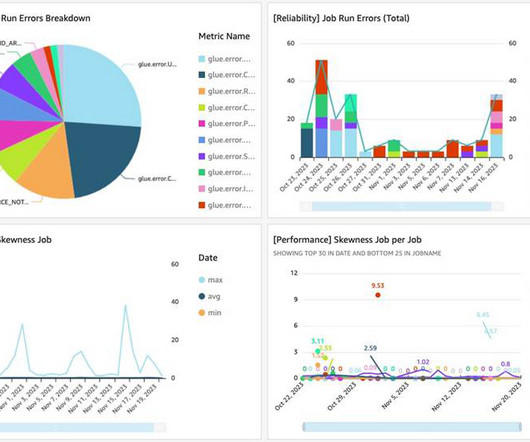
AWS Big Data
MARCH 29, 2024
The rich visualization capabilities of QuickSight allow you to analyze trends in metrics like worker utilization, error categories, throughput, and more. or later AWS accounts for the monitoring account and source account An AWS named profile for the monitoring account and source account The AWS CDK Toolkit 2.87.0

Data Science 101
MAY 20, 2019
The exam can be broken down into 4 components: Machine Learning, Azure ML Studio, Azure Products, and Python. There were a number of questions from this category. Python was the language of choice for the exam, so focus on it. Scikit-learn Azure Machine Learning SDK for Python Hyperparameters. Machine Learning.
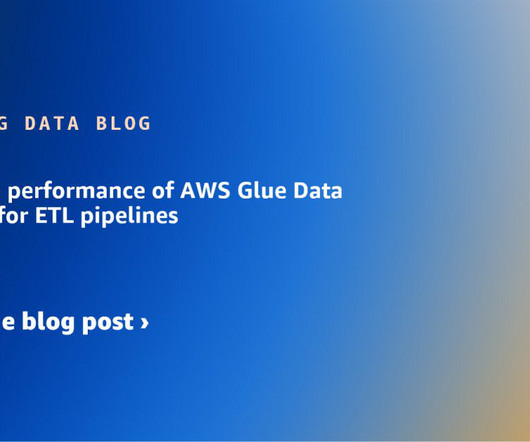
AWS Big Data
MARCH 12, 2024
You can download the dataset or recreate it locally using the Python script provided in the repository. The X-axis shows the data quality ruleset tags as categories. Dataset details The test dataset contains 104 columns and 1 million rows stored in Parquet format. Choose Apply. The Cost and Usage report will be updated.
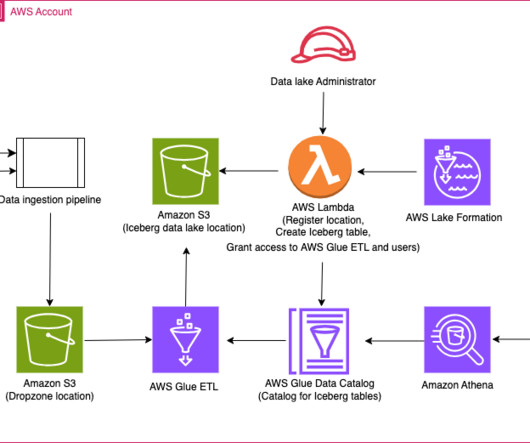
AWS Big Data
MARCH 4, 2024
The function uses the AWS SDK for Python (Boto3) APIs to provision the resources. Let’s add the partition field category to the Iceberg table using the AWS Glue ETL job icebergdemo1-GlueETL2-partition-evolution : ALTER TABLE glue_catalog.icebergdb1.ecomorders On the Configuration tab, choose Environment variables in the left pane.
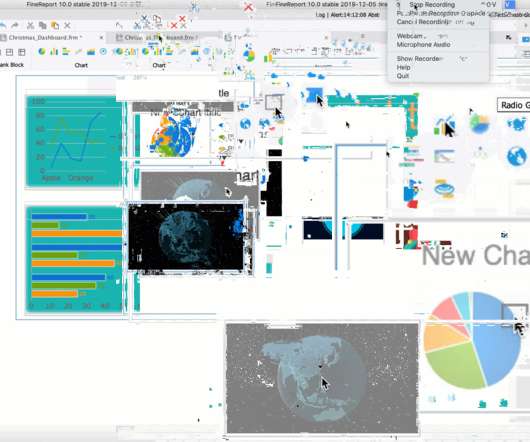
FineReport
JANUARY 5, 2020
The bar chart below shows the sales of each category of products, and the line chart above shows the annual sales of a certain category of products. In the upper right corner of the dashboard is a word cloud diagram showing the categories of Christmas gifts people most want. We can also customize the style of the flow lines.

O'Reilly on Data
AUGUST 8, 2023
At its peak, ChatGPT was in very exclusive company: it’s not quite on the level of Python, Kubernetes, and Java, but it’s in the mix with AWS and React, and significantly ahead of Docker. Although large language models clearly fall into the category of NLP, we suspect that most users associate NLP with older approaches to building chatbots.
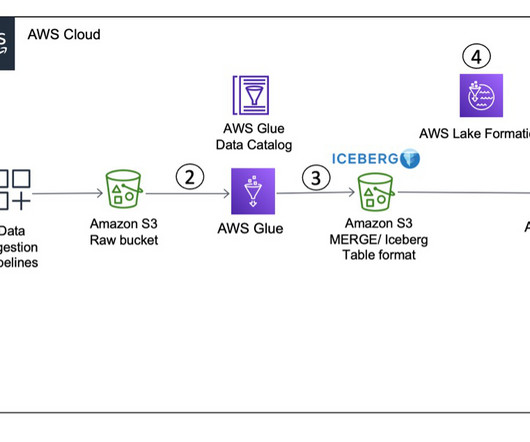
AWS Big Data
APRIL 24, 2023
category – This column represents the category of an item. Make sure you capture this attribute, so that your ETL logic can take appropriate action while merging it. product_id – This is the primary key column in the source data table. product_name – This is the name of the product.
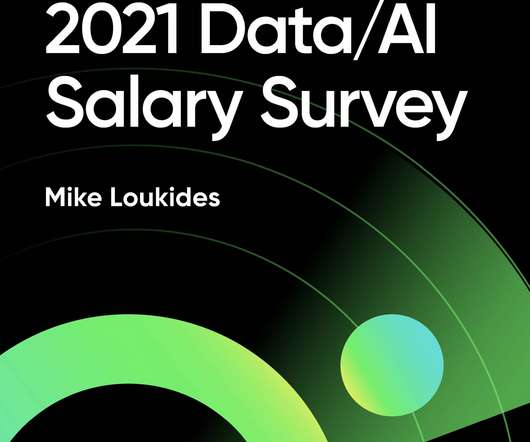
O'Reilly on Data
SEPTEMBER 15, 2021
When we looked at the most popular programming languages for data and AI practitioners, we didn’t see any surprises: Python was dominant (61%), followed by SQL (54%), JavaScript (32%), HTML (29%), Bash (29%), Java (24%), and R (20%). The tools category includes tools for building and maintaining data pipelines, like Kafka.

Smart Data Collective
JUNE 4, 2021
Programming Language (R or Python). Programmers can start with either R or Python. it is overwhelming to learn data science concepts and a general-purpose language like python at the same time. Python can be added to the skill set later. Both R (ggplot2) and python (Matplotlib) have excellent graphing capabilities.

MLWhiz
MAY 13, 2019
Python has a lot of constructs that are reasonably easy to learn and use in our code. args, **kwargs and decorators are some constructs that fall into this category. Then there are some constructs which always confuse us when we encounter them in our code. Then are some that even seasoned programmers are not able to understand.

CIO Business Intelligence
OCTOBER 13, 2023
Data architect responsibilities According to Panoply , typical data architect responsibilities include: Translating business requirements into technical specifications, including data streams, integrations, transformations, databases, and data warehouses Defining the data architecture framework, standards, and principles, including modeling, metadata, (..)

CIO Business Intelligence
SEPTEMBER 29, 2023
Analyzing the hiring behaviors of companies on its platform, freelance work marketplace Upwork has AI to be the fastest growing category for 2023, noting that posts for generative AI jobs increased more than 1000% in Q2 2023 compared to the end of 2022, and that related searches for AI saw a more than 1500% increase during the same time.

Insight
AUGUST 12, 2019
These categories are listed in order of importance: Linux Fundamentals Data Structures and Algorithms System Design Parsing DevOps Tools It’s good to develop a wide, shallow base of knowledge first, so load balance across topics in a round-robin fashion at first. I suggest Python, but you can work in any language.

Data Science 101
OCTOBER 17, 2023
I’m running a series of inputs through over time to see how it handles specific categories of descriptors, modifiers, verbs, reference images with a range of affect, abstracts versus explicitly concrete direction, style suggestions, et cetera. The same happens in Midjourney, thus my daily work there.

FineReport
DECEMBER 9, 2021
Look at your data source and divide all content into three categories: Tracked indicators: data that you will follow regularly but will not be used as performance measures. The platform uses Python script processing method to predict the customer flow of the store. Which KPIs and evaluation indicators define the task as complete?

Domino Data Lab
MAY 1, 2019
Like JSON, YAML files can easily be read into Python as a dictionary but unlike JSON, a YAML file is human-readable, allowing easy changing of configurations all in one place. “Mawer suggests structuring yaml configuration files with the Python script names and function names that the parameters are passed into as the keys.

FineReport
NOVEMBER 18, 2019
In FineReport, the chart’s workflow is similar to Excel, Data Preparation – Insert Chart – Select Chart Type – Select Category Axis, Series Name and Series Value – Set Chart Style. Basic Chart Production Process. Different charts. – Use Excel’s built-in charts to do some regular charts.

AWS Big Data
FEBRUARY 26, 2024
Install Python and jq. Complete the following steps to deploy the solution: Clone the GitHub repository to your IDE and navigate to the cloned repository’s directory:This project is structured like a standard Python project. Install Node.js, npm and the AWS CDK Toolkit. You don’t need any prior knowledge of AWS CDK.
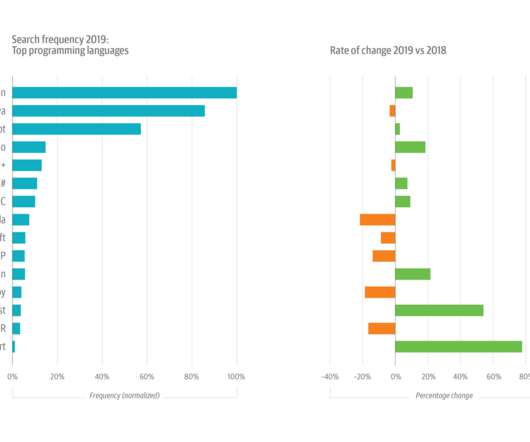
O'Reilly on Data
FEBRUARY 18, 2020
Current signals from usage on the O’Reilly online learning platform reveal: Python is preeminent. This year’s growth in Python usage was buoyed by its increasing popularity among data scientists and machine learning (ML) and artificial intelligence (AI) engineers. In programming, Python is preeminent. Figure 3 (above).
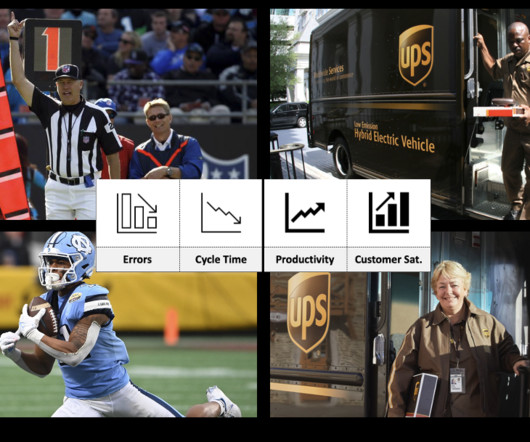
DataKitchen
MARCH 16, 2023
It lists forty-five metrics to track across their Operational categories: DataOps, Self-Service, ModelOps, and MLOps. It takes them too long to write SQL, python, or make a dashboard. However, these various metrics can be seen as rolling into our four categories in the table below. Forty-five metrics!
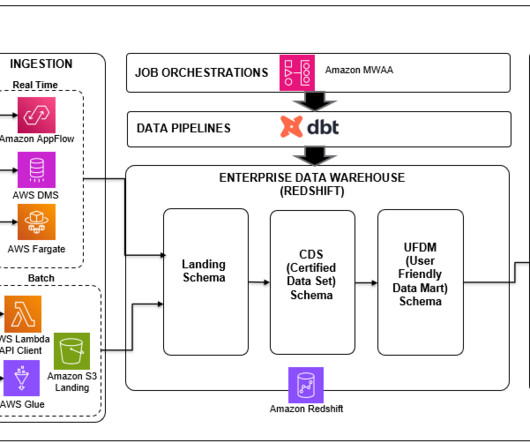
AWS Big Data
NOVEMBER 9, 2023
Data ingestion Data from various sources are grouped into two major categories: real-time ingestion and batch ingestion. else echo "dbt already installed"; fi python --version; echo "listing dbt."; local/bin/dbt --version; if [ $? -gt gt 0 ]; then pip install dbt-redshift>=1.3.0;

Smart Data Collective
OCTOBER 26, 2023
Subjects such as incident response, risk management, access control, and cryptography fall under this category. Learning and using scripting languages like PowerShell and Bash and programming languages like Python, Java, and C++ are also helpful.

Jet Global
JULY 2, 2019
And using Azure’s built-in U-SQL library allows businesses allows you to write code once and have it automatically parallelized for the scale you need, whether in.NET languages, R, or Python. HDInsight: When it comes to Big Data analysis, the open-source Hadoop framework remains one of the most popular options.

Insight
JANUARY 14, 2020
Pillow is a fork of the Python Imaging Library (PIL), and is along the same lines as OpenCV. Keras is an open source deep learning API that was written in Python and runs on top of Tensorflow, so it’s a little more user-friendly and high-level than Tensorflow. You can view the documentation and check out a quick tutorial.

Sisense
SEPTEMBER 3, 2020
Besides strong technical skills (for instance, use of Hadoop, programming in R and Python , math, statistics), data scientists should also be able to tackle open-ended questions and undirected research in ways that bring measurable business benefits to their organization.

IBM Big Data Hub
AUGUST 28, 2023
Text classification: Useful for tasks like sentiment classification, spam filtering and topic classification, text classification involves categorizing documents into predefined classes or categories. Using programming languages like Python with high-tech platforms like NLTK and SpaCy, companies can analyze user-generated content (e.g.,
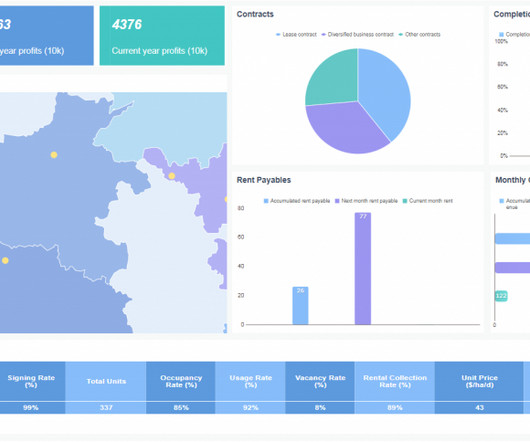
FineReport
MARCH 9, 2023
While Python and Excel are commonly used tools for this purpose, the learning curve for new users can be steep. How to achieve the points mentioned above and write a quarterly report effectively without creating quarterly reports from scratch everytime? Fortunately, FineReport is an excellent graph maker !

Sisense
JUNE 24, 2019
While most of these tools can be used with any cloud service, we’ll look at two broad categories: general cloud automation tools and AWS automation tools, the latter dealing specifically with cloud offerings from the Seattle tech giant.

Occam's Razor
OCTOBER 21, 2013
It was such a great way to see what competitors were doing or where I was beating them on paid or organic or brand or category terms. We can guess our brand terms and product keywords, but the wonderful harvest of category-type, and beyond, keywords is gone. Another alternative is to download it automatically using Python.

O'Reilly on Data
MARCH 18, 2020
The sample is far from tech-laden, however: the only other explicit technology category—“Computers, Electronics, & Hardware”—accounts for less than 7% of the sample. The “Other” category (~22%) comprises 12 separate industries. not to mention an accessible lingua franca —Python—the bar for entry is actually pretty low.

AWS Big Data
MARCH 25, 2024
FMs can analyze each answer and assign a category of user satisfaction. With Amazon Managed Service for Apache Flink Studio , you can build and run Apache Flink stream processing applications using standard SQL, Python, and Scala in an interactive notebook. You can put FMs to work for users’ sentiment analysis.

O'Reilly on Data
OCTOBER 19, 2021
This is both frustrating for companies that would prefer making ML an ordinary, fuss-free value-generating function like software engineering, as well as exciting for vendors who see the opportunity to create buzz around a new category of enterprise software. The new category is often called MLOps. Why: Data Makes It Different.

Domino Data Lab
JANUARY 6, 2019
or Julia (winner of 2018 Wilkinson prize ), most people are focusing on Python for introduction to data science. I used to do weekly trend analysis of which titles in this category got the most usage online for O’Reilly Media: Here are the best ones roughly in order of most recency + usage: Python for Data Analysis, 2nd Edition.
Expert insights. Personalized for you.
We have resent the email to
Are you sure you want to cancel your subscriptions?

Let's personalize your content